According to Marketplace Pulse, 52 new sellers appear on Amazon every hour. With a densely competitive shopping marketplace, retailers are constantly faced with the challenge of creating brand loyalty with Amazon buyers. Amazon added a new tool to merchants’ utility belts by giving them the ability to create their own Amazon Storefront.
What are Amazon Storefronts?
Storefronts have replaced Brand Pages, which were turned off in December 2017. An Amazon Storefront is a customizable destination page for a brand’s Amazon listed products that allows the brand to create a brand-centric purchasing experience and build loyalty with their Amazon buyers. Completely free to use, Storefronts can be used as landing pages for headline ads, inbound links for external advertising mediums, and can appear in Google search results.
Retailers are hopping on the bandwagon and creating their own Storefront. It can be viewed by clicking onto a product page and tapping the hyperlinked Brand name, shown below in red.
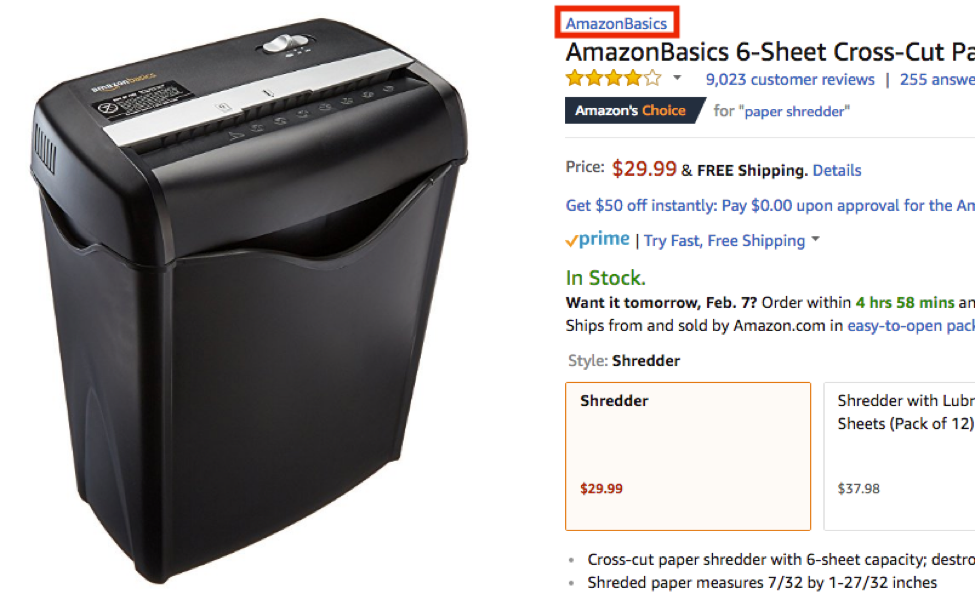
This will take us to AmazonBasic’s Storefront where we are presented with exclusive AmazonBasics products. Product information and details are displayed together with a hero image, brand logo, and a navigation bar. Brands are also able to personalize these pages with dynamic product recommendations or best-selling product recommendations. These automatic widgets are controlled by Amazon and are like the “similar products” section seen at the bottom of product pages.
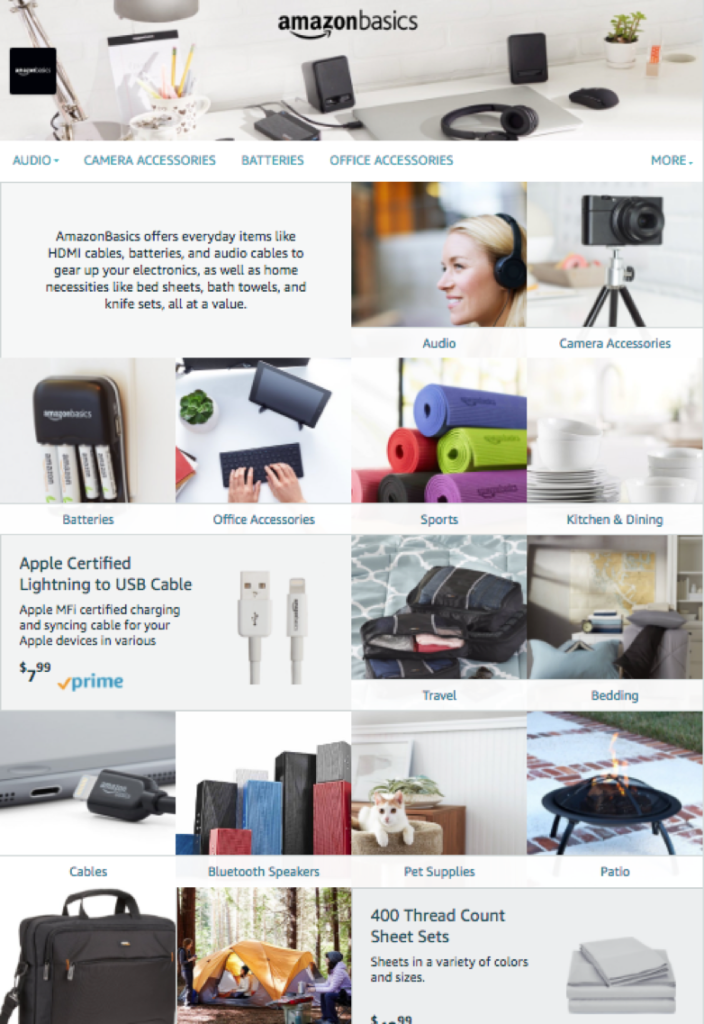
Features of Amazon Storefronts
Multi-page
Brands can create multiple pages (up to 3 deep) to display their product catalog. The navigation bar is created automatically by Amazon as the Store is built. Brands can adjust the navigation bar by reorganizing their Store using the page navigator tool in the Store Builder.
Tip: Brands should set-up Storefront to resemble their website for a consistent user experience across both platforms.
Store Builder
Amazon provides an easy-to-use editor as well as 3 templates (Product Grid, Product Highlight, and Marquee) to choose from.
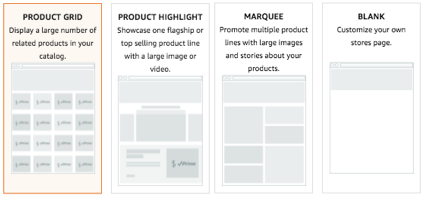
Content
Stores can support rich media like videos and image galleries to improve the buyer’s shopping experience. The 10 types of supported content, called “tiles”, are shown below.
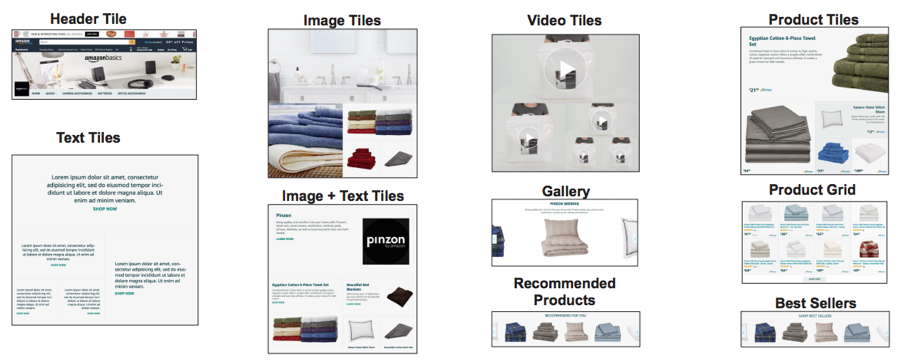
Analytics
Amazon provides analytics that allow stores to track traffic and conversions. The Insights Report is broken down in detail by traffic volume, sales, individual page views/sales, and traffic/sales source. Date ranges are customizable and all data is exportable.
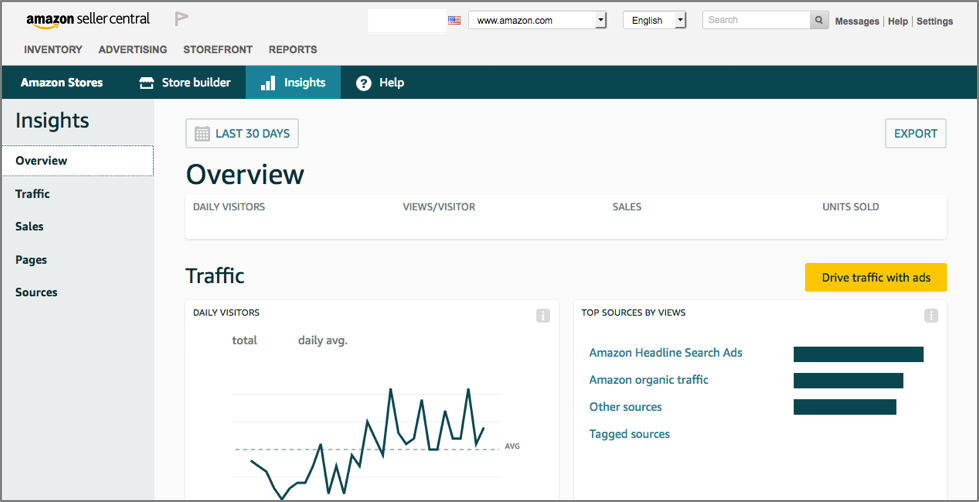
Uniquely branded URL
Amazon has finally given Brands a unique branded URL (amazon.com/brand-name) that will direct buyers to a specific Storefront, which makes it easy to promote said Storefront via social media and other advertising channels. However, the URL turns long and cumbersome again once a viewer arrives on the page.
Eligibility and Approval Process
Eligibility
In order to be eligible to create an Amazon Storefront, a Brand must be registered on Amazon’s Brand Registry 2.0, meaning Storefronts are open to all vendors but only some third-party sellers.
Approval Process
After creating an Amazon Storefront, a brand must submit their Store for approval. The moderation process, is 72 hours long, and a Store can be rejected for multiple reasons.
Note: Storefronts cannot be changed while pending moderation.
Common Mistakes to Avoid When Creating an Amazon Storefront
As mentioned, Amazon can reject a Storefront for multiple reasons. Three common reasons are image/design mistakes, including prohibited information, and text errors.
Image/Design Mistakes
- Hero image isn’t high quality
- Logo image isn’t a 1:1 ratio
- Logo blocks important information in the hero image
Prohibited Information
- Links that lead to external sites
- Retailer’s phone and website URL
- Includes guarantees such as “buy now and get a 1-year warranty”
Text Errors
- Incomplete sentences
- Writing words in all capital letters
- Spelling mistakes
- Text in image is too small to read
Tip: Check every tile in mobile view for incomplete sentences. Product descriptions may be in the “line limit” for desktop view but are cut off in the mobile view.
Storefronts on Amazon
In a shopping environment where one click could cost a sale, Amazon Storefronts allow retailers to create a brand-centric shopping experience. These “mini-sites” help brands pull shoppers into their own Amazon ecosystem while they shop. This means that when the customer buys, it’s their brand.
Your Storefront is a great way to get your brand in front of Amazon shoppers. An effective Amazon PPC strategy is also key to getting in front of new buyers. Learn more about WTM Digital’s Amazon PPC services and how we can help you sell more on Amazon.
